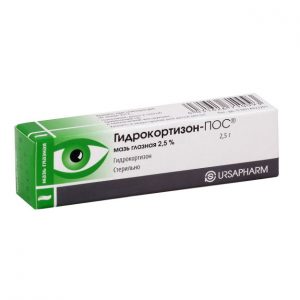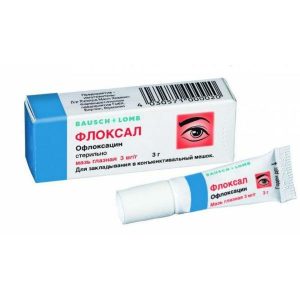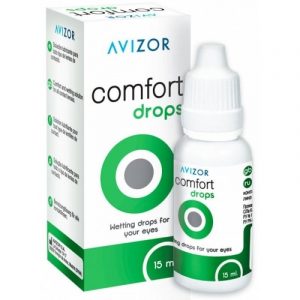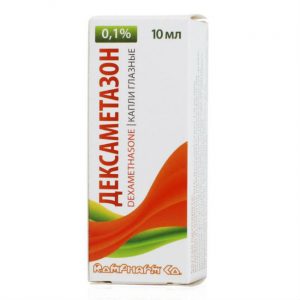Description
Release form
ALFAGAN P. Eye drops
Packaging
5 ml – polyethylene dropper bottle (1) – packs of cardboard.
Pharmacological action
Brimonidine is a selective alpha2-adrenergic agonist that has a stimulating effect on alpha2-adrenergic receptors. When used in a dosage form, eye drops 0, A 15% maximum reduction in intraocular pressure (IOP) is achieved after 2 hours. The antihypertensive effect of brimonidine is ensured by reducing the formation and increasing outflow of intraocular fluid along the uveoscleral pathway.
Indications
Open angle glaucoma. Increased eye pressure (both monotherapy and in combination with other drugs that reduce IOP).
Contraindications
hypersensitivity to brimonidine and other components of the
drug simultaneous therapy with MAO inhibitors
children under 2 years of age, low body weight (up to 20 kg)
period of breastfeeding.
Precautions: orthostatic hypotension, heart failure, cerebrovascular diseases leading to cerebrovascular insufficiency, renal failure (CC below 40 ml / min), liver failure, depression, Raynaud’s syndrome, thromboangiitis obliterans, children 2 to 7 years old.
Use during pregnancy and lactation
In preclinical studies, no effect on reproductive function was found. However, it was found that brimonidine crosses the placental barrier, and is found in a small amount in the blood plasma of the fetus. No damaging effect on the fetus.
No controlled studies in pregnant women have been conducted. During pregnancy, Alfagan R should be used with extreme caution, only in cases when the expected benefit to the mother significantly exceeds the possible risk to the fetus.
Animal studies have found that brimonidine tartrate passes into breast milk. At the time of use of the drug, breast-feeding should be discontinued.
Composition
1 ml. contains brimonidine tartrate 1.5 mg
auxiliary components: stabilized hydroxy-chloro complex (sodium chloride, sodium chlorate, chlorine dioxide), sodium carmellose, sodium chloride, potassium chloride, calcium chloride dihydrate, magnesium chloride hexahydrate, boric acid, sodium tetraborate decahydrate , hydrochloric acid or sodium hydroxide, purified water.
Dosage and Administration
Locally. In the conjunctival sac of the affected eye, 1 drop 3 times a day with an interval between injections of about 8 hours.
Alfagan R can be used with other ophthalmic preparations to reduce IOP. If you use more than 2 drugs, then you need to take a 5-minute break between installations.
Side effects of
The frequency of side effects identified during the studies was estimated as follows: very often (> 10%), often (> 1% and 0.1% and 0.01% and
. In clinical studies of the drug Alfagan P, the following side effects were identified effects:
On the part of the organ of vision: very often – allergic conjunctivitis, conjunctival hyperemia, itching of the mucous membranes of the eyes and eyelid skin often – burning sensation, conjunctival folliculosis or follicular conjunctivitis, local allergic reactions from the eyes (including keratoconjunctivitis) ble Arita, blepharoconjunctivitis, impaired clarity of vision, cataract, conjunctival edema, hemorrhage in the conjunctiva, conjunctivitis, retention lacrimation, mucous discharge from the eyes, dryness and irritation of the mucous membrane of the eyes, pain, swelling of the eyelids, redness of the eyelids, sensation of a foreign body in the eyes, keratitis, lesions of the eyelids, photosensitivity, superficial point keratopathy, lacrimation, loss of visual fields, functional disorders vitreous humor, vitreous hemorrhage, floating opacities in the vitreous body and decreased visual acuity infrequently – corneal erosion, barley
From the central nervous system: often – headache, drowsiness, imp onnitsa, dizziness.
From the cardiovascular system: often – increased blood pressure infrequently – decreased blood pressure.
On the part of the respiratory system: often – bronchitis, cough, shortness of breath infrequently – dryness of the nasal mucosa, apnea.
From the gastrointestinal tract: often – gastrointestinal disorders – dyspepsia, dry oral mucosa.
From the skin and subcutaneous fat: often a rash.
Infectious and parasitic diseases: often – flu-like syndrome, infectious disease (chills and respiratory infection), rhinitis, sinusitis, including infectious.
Laboratory indicators: often – hypercholesterolemia.
Others: often – general allergic reactions, asthenia, fatigue infrequently – taste perversion.
Children noted: apnea, bradycardia, decreased blood pressure, hypothermia, muscle hypotension.
In the post-marketing period, additional reports of the following side effects were received:
From the organ of vision: unknown frequency – iritis, dry keratoconjunctivitis, miosis
From the central nervous system: depression
From the cardiovascular system: bradycardia, tachycardia.
From the gastrointestinal tract: nausea.
From the skin and subcutaneous fat: local skin reactions (erythema, itching of the eyelids, swelling of the face, rash and vasodilation of the vessels of the skin of the eyelids and face).
overdose
There are no reports of overdose.
In case of accidental ingestion, the following symptoms are possible: CNS depression, drowsiness, depression and loss of consciousness, decrease in blood pressure, bradycardia, decrease in body temperature, cyanosis of the skin, apnea.
Symptomatic therapy and monitoring of airway patency are required when overdose symptoms are detected.
Storage conditions
Store at a temperature not exceeding 25 ° C.
Expiration
2 years.
Terms of delivery from
pharmacies Prescription
dosage form
dosage form
eye drops
Allergan, USA




